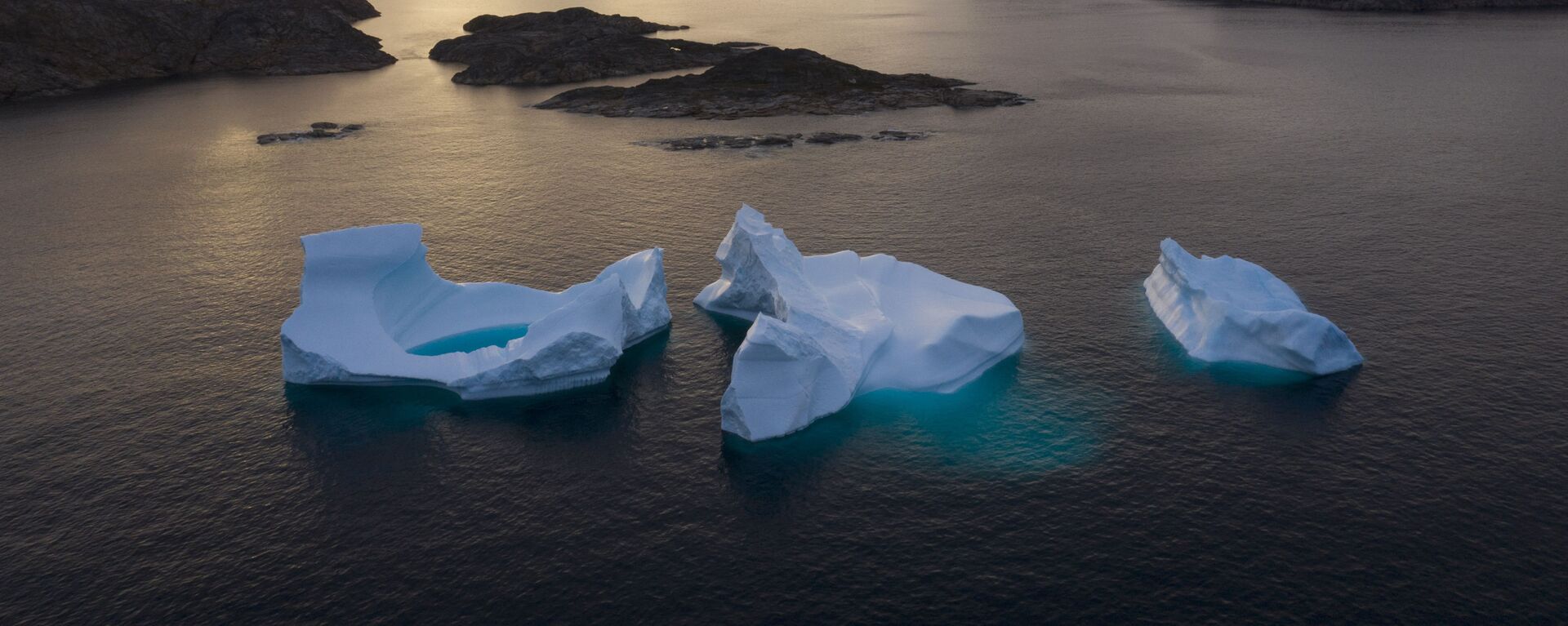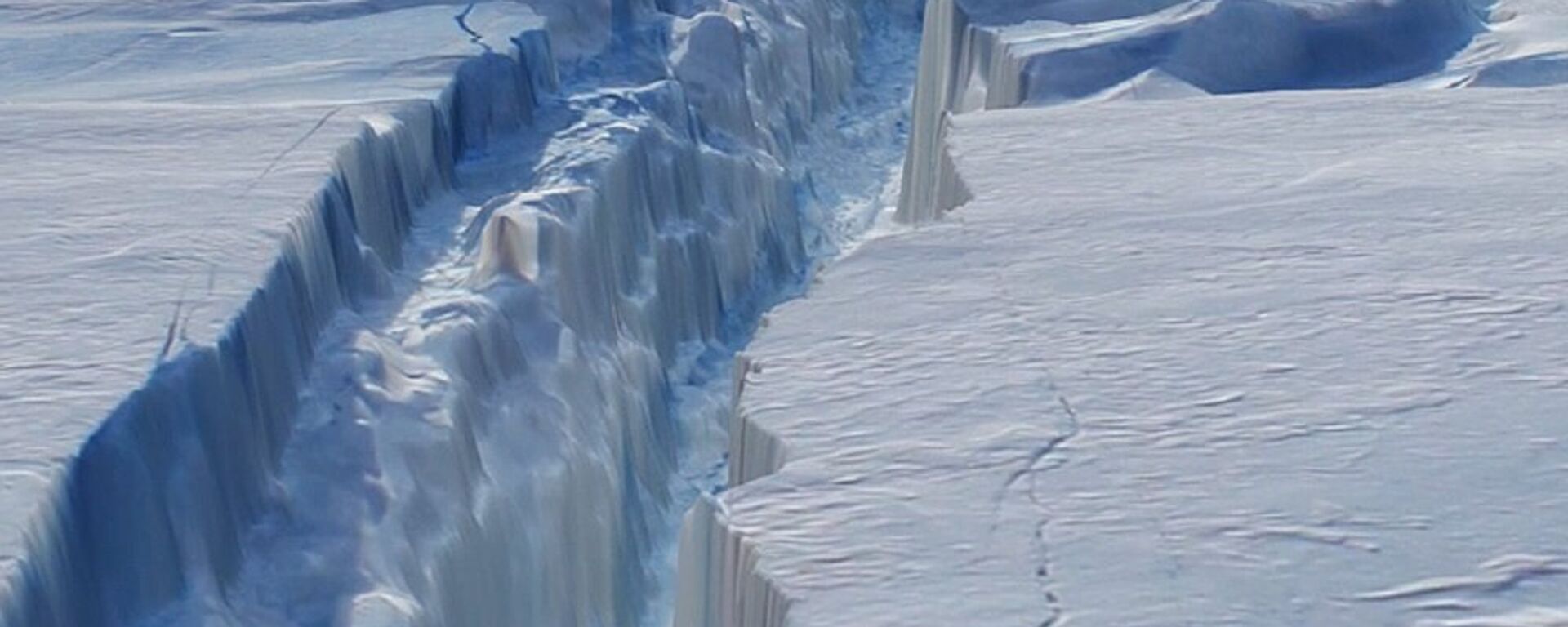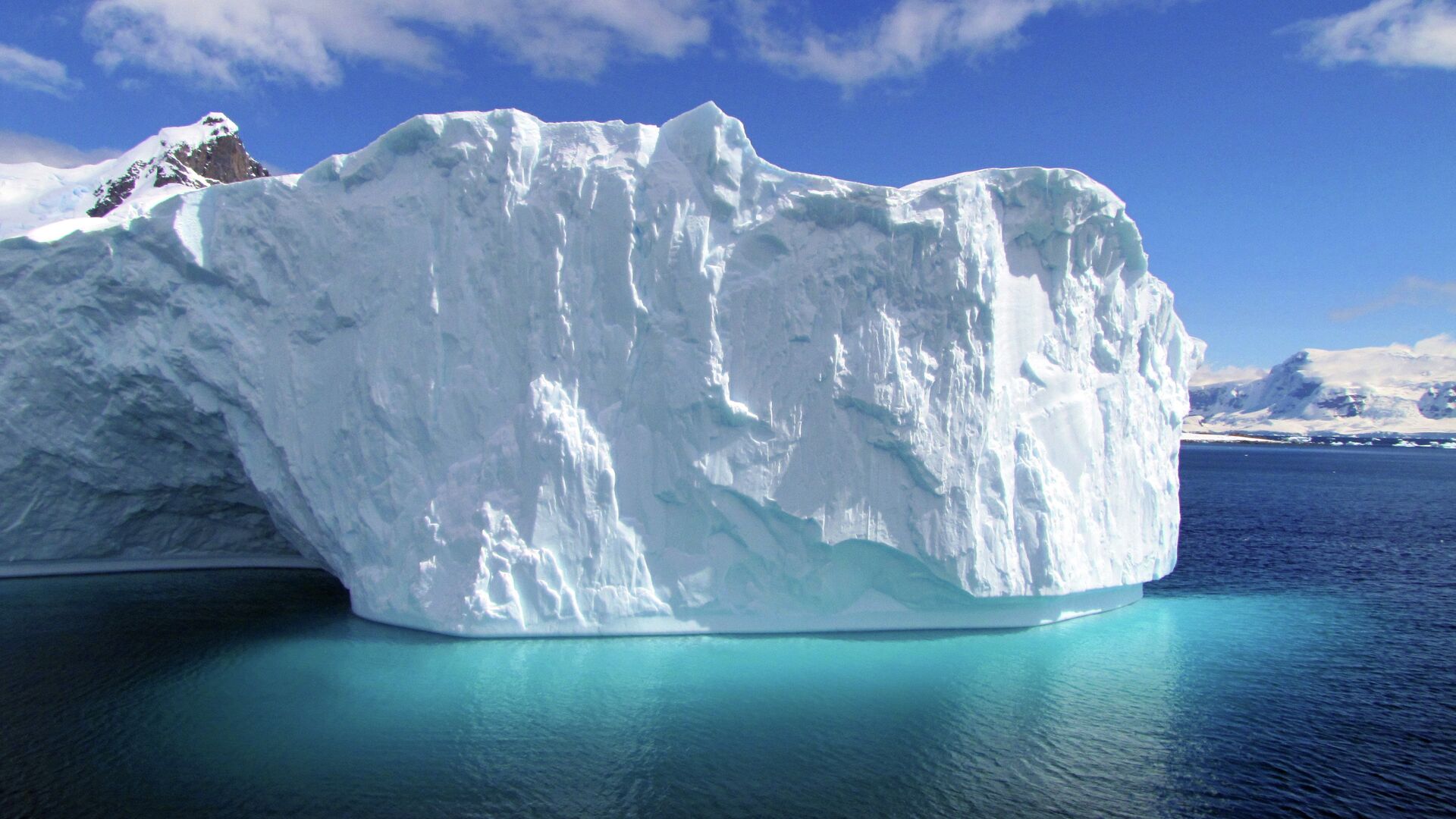https://sputnikglobe.com/20231214/a23a-iceberg-trillion-ton-titans-drift-from-antarctic-grip-after-30-years-1115571477.html
A23a Iceberg: Trillion-Ton Titan's Drift From Antarctic Grip After 30 Years
A23a Iceberg: Trillion-Ton Titan's Drift From Antarctic Grip After 30 Years
Sputnik International
During the past ten years, the A23a iceberg has thinned by an average of 2.5 meters yearly, a consequence of increasing ocean warmth. Its uneven structure caused it to be trapped in shallow mud, but it has since begun its drift.
2023-12-14T17:32+0000
2023-12-14T17:32+0000
2023-12-14T17:32+0000
beyond politics
science & tech
newsfeed
europe
norway
united kingdom (uk)
southern ocean
university college london (ucl)
antarctica
https://cdn1.img.sputnikglobe.com/img/101744/27/1017442752_0:306:3264:2142_1920x0_80_0_0_63dd02764a065416b2d3a7e902c532a9.jpg
The colossal iceberg A23a, which broke away from Antarctica's coast in 1986, is now on a dangerous path in the Southern Ocean according to researchers.Recent data from the European Space Agency's CryoSat-2 mission shows that iceberg A23a is remarkably large, with an average thickness of over 280 meters and spanning 3,900 square kilometers. Its volume is estimated at 1,100 cubic kilometers, and the giant ice cube weighs just under one trillion tonnes. The wandering berg's size is so immense that it surpasses the height of London's tallest skyscrapers, including 22 Bishopsgate — known as the TwentyTwo — and the Shard near London Bridge, which stand at 278 meters and 310 meters respectively.CryoSat-2's radar altimeter has been pivotal in monitoring the iceberg's above-water height, allowing scientists to estimate the submerged portion using ice density calculations. This technology has enabled detailed observations of the iceberg gradually melting as it drifts through warmer ocean waters.Dr. Anne Braakmann-Folgmann from the University of Tromso, Norway, stressed the importance of satellites like CryoSat-2 monitoring iceberg thickness from space. She noted that understanding sea-floor topography is vital for predicting the grounding or release of icebergs from shallow sea beds.A23a originated from the Filchner Ice Shelf in the southern Weddell Sea during a massive breakout of icebergs. Shortly after its formation, it became lodged in shallow sea mud, transforming into an "ice island" for over 30 years.CryoSat solved the mystery of that stationary period, revealing an uneven structure with some parts thicker than others. A particularly deep keel, with a draft of almost 350 meters identified in 2018, anchored the iceberg. This unevenness caused surface crevasses, visible in satellite images, as a tell-tale sign of the iceberg's violent encounter with the sea floor.Over the past decade A23a has steadily lost about 2.5 meters of thickness per year, as Dr. Andy Ridout from University College London noted. This gradual thinning, a result of exposure to warmer ocean temperatures, has enabled the iceberg to break free and begin drifting. Currently positioned near the Antarctic Peninsula's tip, A23a is influenced by fast-moving water currents and westerly winds. Its future path, possibly towards the "iceberg alley" near South Georgia, is closely watched by scientists.Professor Mike Meredith from the British Antarctic Survey highlighted the environmental impact of the A23a's journey, noting it is not merely a natural spectacle but also a major ecological event.Large icebergs like A23a churn up the ocean waters and bring large quantities of nutrients to the surface, causing phytoplankton blooms. This process, which includes fertilization of the ocean with dust, underscores the profound interconnectedness of natural systems and the substantial influence of massive ice structures on marine ecosystems.
https://sputnikglobe.com/20220203/worlds-largest-island-loses-enough-melting-ice-over-20-years-to-submerge-us-danish-study-finds-1092704288.html
https://sputnikglobe.com/20211214/antarctic-ice-shelf-holding-the-doomsday-glacier-could-shatter-within-five-years-scientists-warn-1091518952.html
norway
united kingdom (uk)
southern ocean
Sputnik International
feedback@sputniknews.com
+74956456601
MIA „Rossiya Segodnya“
2023
Chimauchem Nwosu
https://cdn1.img.sputnikglobe.com/img/07e7/09/01/1113046371_0:99:1536:1635_100x100_80_0_0_9c5c627283eca931c39fe4852bbb301c.jpg
Chimauchem Nwosu
https://cdn1.img.sputnikglobe.com/img/07e7/09/01/1113046371_0:99:1536:1635_100x100_80_0_0_9c5c627283eca931c39fe4852bbb301c.jpg
News
en_EN
Sputnik International
feedback@sputniknews.com
+74956456601
MIA „Rossiya Segodnya“
Sputnik International
feedback@sputniknews.com
+74956456601
MIA „Rossiya Segodnya“
Chimauchem Nwosu
https://cdn1.img.sputnikglobe.com/img/07e7/09/01/1113046371_0:99:1536:1635_100x100_80_0_0_9c5c627283eca931c39fe4852bbb301c.jpg
a23a iceberg, cryosat-2, european space agency, antarctic, sea temperatures, iceberg thickness, iceberg drift, ocean ecosystems, marine environments, filchner ice shelf, weddell sea, sea mud, ice island, sea-floor topography, iceberg grounding, satellite monitoring, ocean waters, environmental impact, phytoplankton blooms, british antarctic survey, southern ocean, iceberg alley.
a23a iceberg, cryosat-2, european space agency, antarctic, sea temperatures, iceberg thickness, iceberg drift, ocean ecosystems, marine environments, filchner ice shelf, weddell sea, sea mud, ice island, sea-floor topography, iceberg grounding, satellite monitoring, ocean waters, environmental impact, phytoplankton blooms, british antarctic survey, southern ocean, iceberg alley.
A23a Iceberg: Trillion-Ton Titan's Drift From Antarctic Grip After 30 Years
During the past ten years, the iceberg A23a has thinned by an average of 2.5 meters yearly, a consequence of increasing ocean warmth. Its uneven structure caused it to be trapped in shallow mud, but it has since begun its drift.
The colossal
iceberg A23a, which broke away from Antarctica's coast in 1986, is now on a dangerous path in the Southern Ocean according to researchers.
Recent data from the
European Space Agency's CryoSat-2 mission shows that iceberg A23a is remarkably large, with an average thickness of over 280 meters and spanning 3,900 square kilometers. Its volume is estimated at 1,100 cubic kilometers, and the giant ice cube weighs just under one trillion tonnes.
The wandering berg's size is so immense that it surpasses the height of London's tallest skyscrapers, including 22 Bishopsgate — known as the TwentyTwo — and the Shard near London Bridge, which stand at 278 meters and 310 meters respectively.
CryoSat-2's radar altimeter has been pivotal in monitoring the iceberg's above-water height, allowing scientists to estimate the submerged portion using ice density calculations. This technology has enabled detailed observations of the iceberg gradually melting as it drifts through warmer ocean waters.

3 February 2022, 05:17 GMT
Dr. Anne Braakmann-Folgmann from the University of Tromso, Norway, stressed the importance of satellites like CryoSat-2 monitoring iceberg thickness from space. She noted that understanding sea-floor topography is vital for predicting the grounding or release of icebergs from shallow sea beds.
A23a originated from the Filchner Ice Shelf in the southern Weddell Sea during a massive breakout of icebergs. Shortly after its formation, it became lodged in shallow sea mud, transforming into an "ice island" for over 30 years.
CryoSat solved the mystery of that stationary period, revealing an uneven structure with some parts thicker than others. A particularly deep keel, with a draft of almost 350 meters identified in 2018, anchored the iceberg. This unevenness caused surface crevasses, visible in satellite images, as a tell-tale sign of the iceberg's violent encounter with the sea floor.
Over the past decade A23a has steadily lost about 2.5 meters of thickness per year, as Dr. Andy Ridout from University College London noted. This gradual thinning, a result of exposure to warmer ocean temperatures, has enabled the iceberg to break free and begin drifting.
Currently positioned near the Antarctic Peninsula's tip, A23a is influenced by fast-moving water currents and westerly winds. Its future path, possibly towards the "iceberg alley" near South Georgia, is closely watched by scientists.
Professor Mike Meredith from the British Antarctic Survey highlighted the environmental impact of the A23a's journey, noting it is not merely a natural spectacle but also a major ecological event.
Large icebergs like A23a churn up the ocean waters and bring large quantities of nutrients to the surface, causing phytoplankton blooms. This process, which includes fertilization of the ocean with dust, underscores the profound interconnectedness of natural systems and the substantial influence of massive ice structures on marine ecosystems.

14 December 2021, 16:28 GMT





